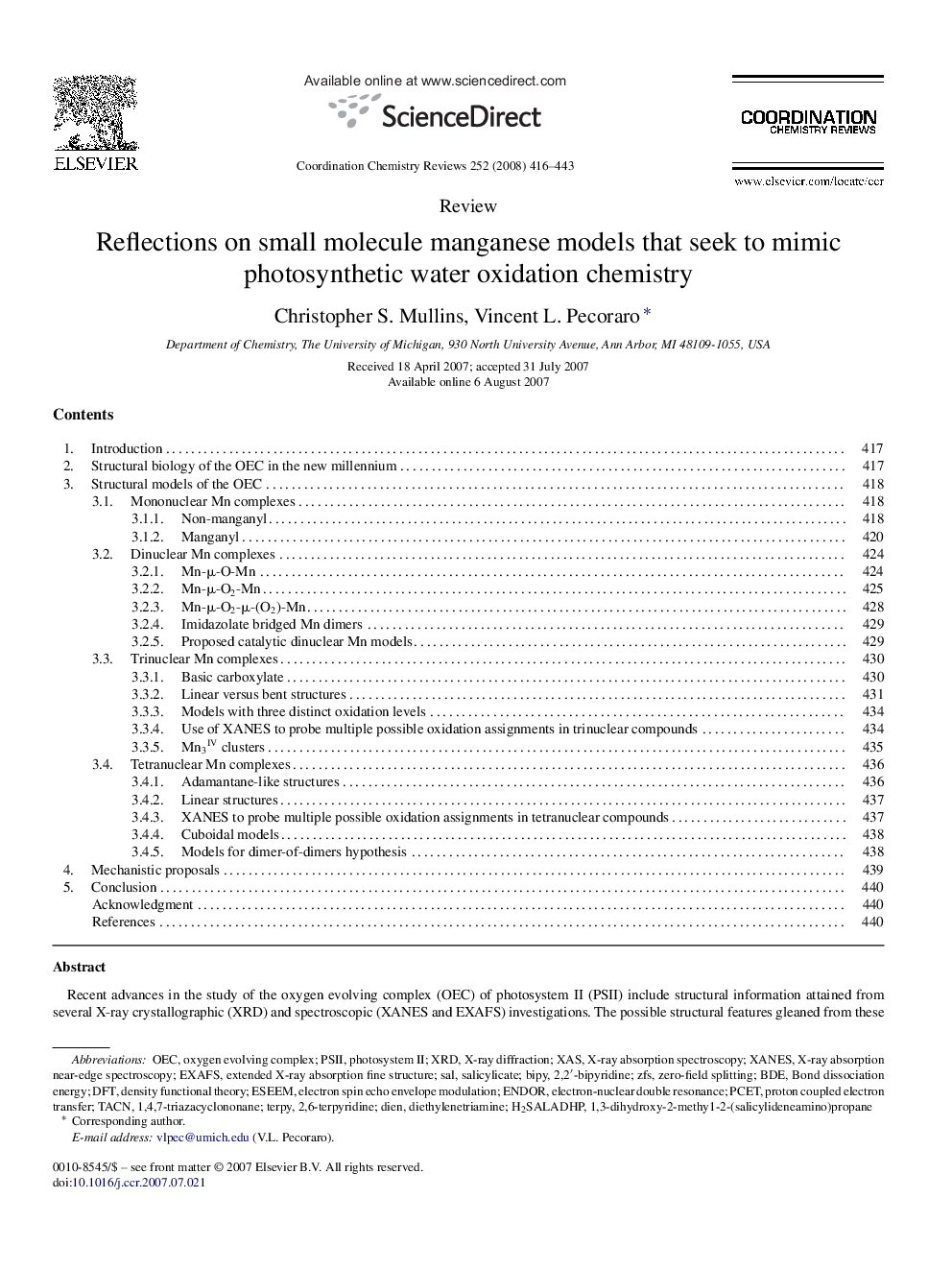| Article ID | Journal | Published Year | Pages | File Type |
|---|---|---|---|---|
| 1299447 | Coordination Chemistry Reviews | 2008 | 28 Pages |
Recent advances in the study of the oxygen evolving complex (OEC) of photosystem II (PSII) include structural information attained from several X-ray crystallographic (XRD) and spectroscopic (XANES and EXAFS) investigations. The possible structural features gleaned from these studies have enabled synthetic chemists to design more accurate model complexes, which in turn, offer better insight into the possible pathways used by PSII to drive photosynthetic water oxidation catalysis. Mononuclear model compounds have been used to advance the knowledge base regarding the physical properties and reactivity of high-valent (MnIV or MnV) complexes. Such investigations have been especially important in regard to the manganyl (MnIVO or MnV(O) species, as there are no reports, to date, of any structurally characterized multinuclear model compounds that incorporate such a functionality. Dinuclear and trinuclear model compounds have also been thoroughly studied in attempts to draw further comparison to the physical properties observed in the natural system and to design systems of catalytic relevance. As the reactive center of the OEC has been shown to contain an oxo-Mn4Ca cluster, exact structural models necessitate a tetranuclear Mn core. The number of models that make use of Mn4 clusters has risen substantially in recent years, and these models have provided evidence to support and refute certain mechanistic proposals. Further work is needed to adequately address the rationale for Ca (and Cl) in the OEC and to determine the sequence of events that lead to O2 evolution.
